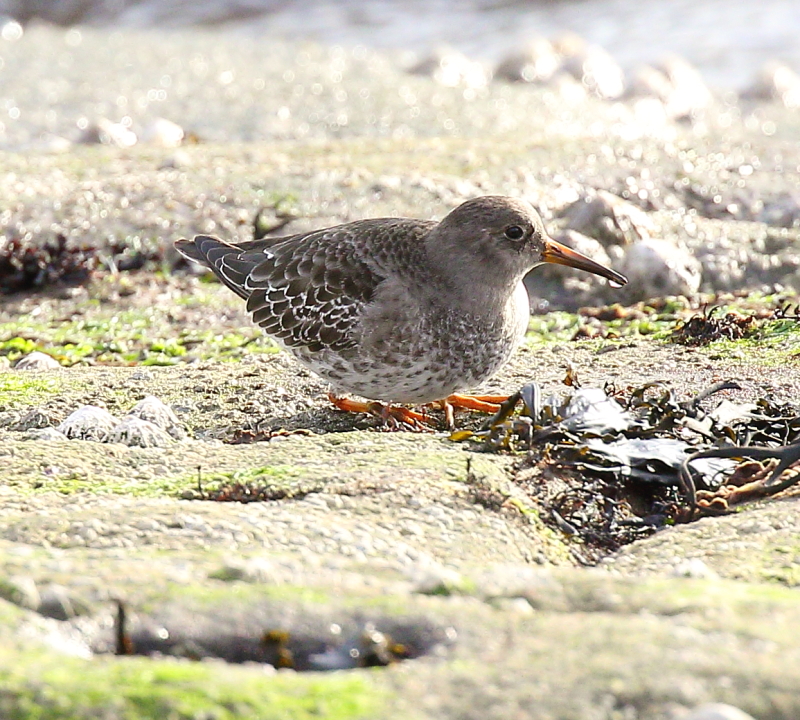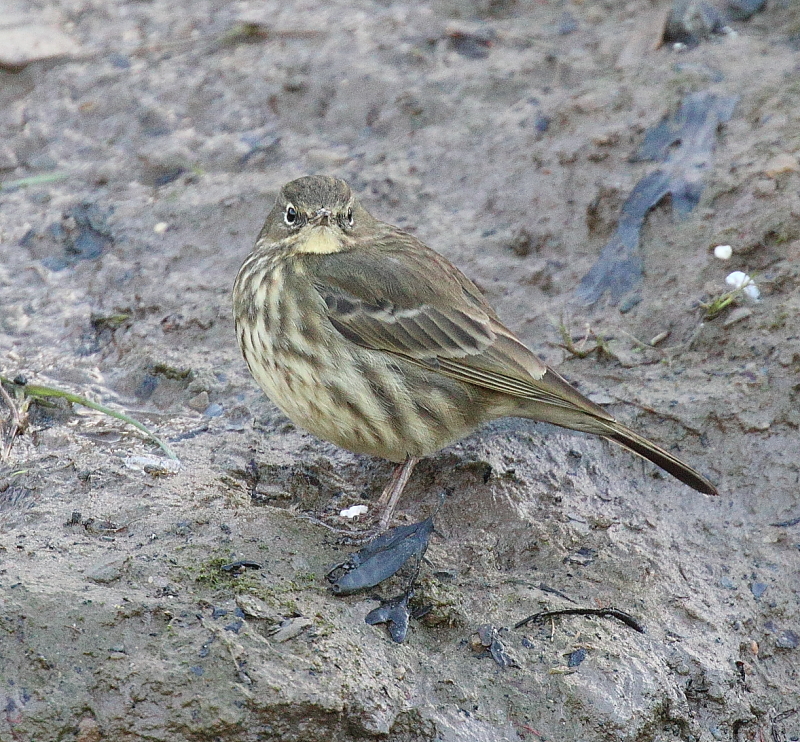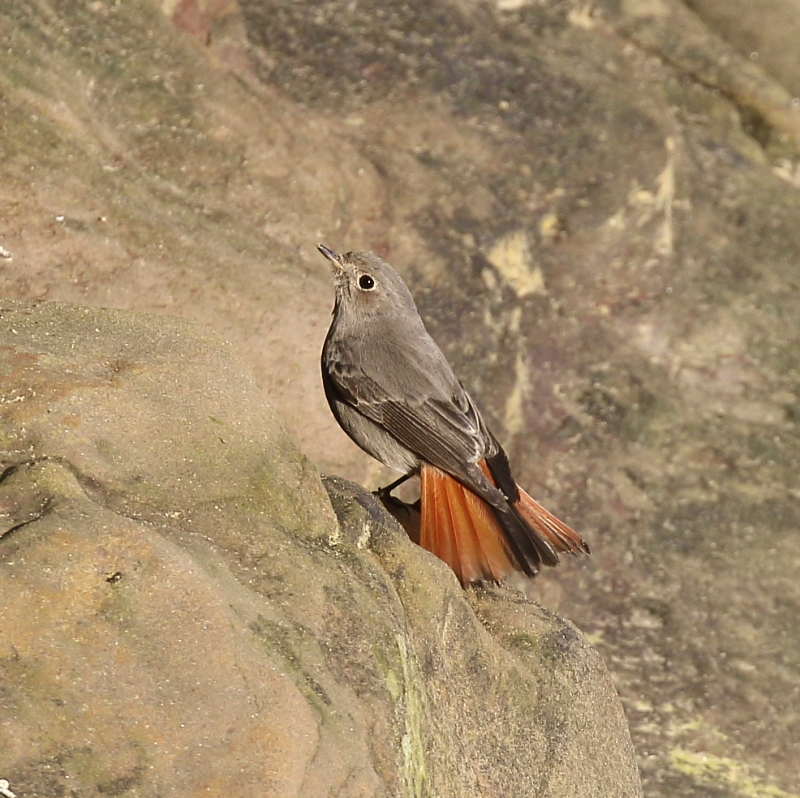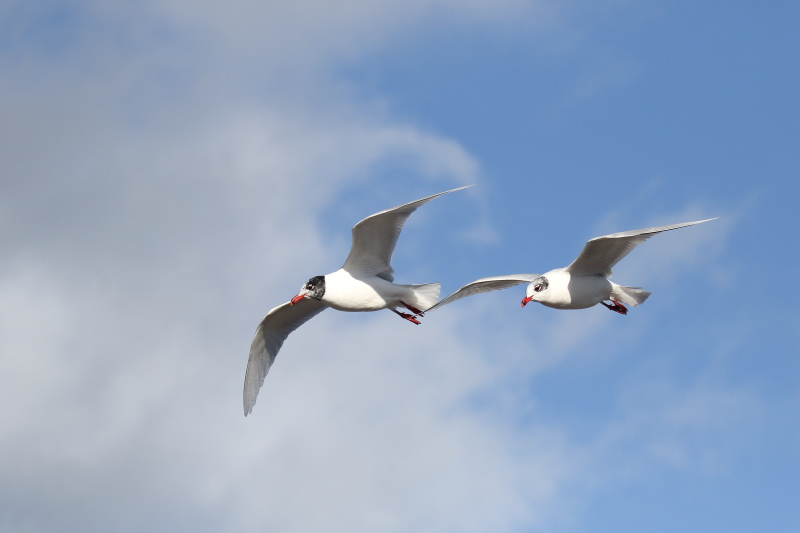First stop on 10th, Tynemouth where the wintering Black Redstart showed very well in the sunshine, feeding well. Here too was a Grey Wagtail, which was flycatching , jumping repeatedly into the air and three Rock Pipits. A passing Skylark flew overhead. Then the resident Feral Pigeons took to the air in panic as a Peregrine appeared, then landed on the cliffs. Later it flew out again and then departed. A female Sparrowhawk then flew in to land on the cliffs , looking somewhat out of place. Around a dozen Fulmars were on the cliffs, showing early signs of spring fever, pair bonding and flying together in the good conditions, landing at last year’s nesting sites. Five Purple Sandpipers fed along the shoreline here.
Heading a short way north to St Mary’s Island next, where the incoming tide pushed the many feeding waders to within a few feet of me in the North Bay. Seven Purple Sandpipers were among the feeding Sanderling(69), Dunlin(12), Turnstones(24), Ringed Plover(14) and a single Knot.One Sanderling was managing with difficulty with only one leg. Seven or eight Rock Pipits were an increase on recent numbers. A pair of Kestrels and a female Stonechat perched on a fenceline and a Grey Wagtail flew over, calling. The fine weather prompted two or three Skylarks to sing and 50 Oystercatchers and 67 Curlew fed on the nearby mini-golf course.
The following day continued fine and sunny and a run up to Newbiggin saw five Mediterranean Gulls in the car park, giving great views and calling frequently. Down to Killingworth Lake and the Smew remained on the small lake with several Gooseanders and Goldeneye.
The 12th and a Smew, probably the same bird, was at Holywell Pond (there have been two seen in the area). A Song Thrush and Mistle Thrush could be heard singing.
At Tynemouth, the Black Redstart remained in it’s usual area. St Mary’s again, and fine views of a Short eared Owl hunting the fields, perched on a fence, then pouncing on prey. Around 900 Golden Plover took to the air from the rocks along the shore. An increase in the 300 of the 10 th. though the flock move to and from their feeding areas in fields to the west.
A.S.Jack






